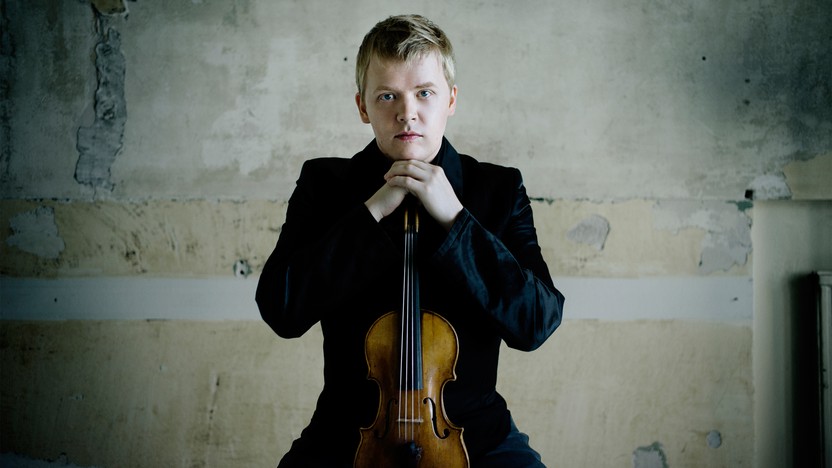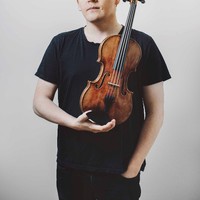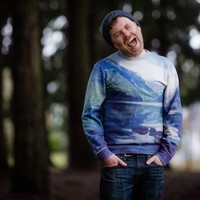Pekka Kuusisto: Migration Patterns


 Watch Video
Watch Video
Violinist and SPCO Artistic Partner Pekka Kuusisto collaborated with singer Sam Amidon, combining folk songs with excerpts from Norwegian composer Edvard Grieg’s Holberg Suite.
Edvard Grieg: Prelude from Holberg Suite
Traditional: “Walkin’ Boss”
Traditional: “Sugar Baby”
Edvard Grieg: Sarabande from Holberg Suite
Edvard Grieg: Gavotte from Holberg Suite
Traditional: “Saro”
Notes on Holberg Suite
The Norwegian composer Edvard Grieg ranks as the preeminent Scandinavian musical voice of his generation. His music demonstrates a special gift for lyricism and a keen ear for folksong, which animate the span of his oeuvre, from the famous Peer Gynt Suite and Piano Concerto to his songs and exquisitely crafted piano miniatures.
Grieg composed his Holberg Suite—properly known as Fra Holbergs tid (From Holberg’s Time)—in 1884. The Suite is one of two works, along with a cantata for men’s voices that Grieg composed to commemorate the Norwegian playwright Ludvig Holberg’s bicentenary. Though Holberg, celebrated as a founding figure in Norwegian and Danish literature, spent most of his life in Denmark, Norway was nevertheless eager to celebrate its native son. Grieg was especially so: the composer had previously contributed a portion of his publishing fees towards the construction of a statue of Holberg in their shared birthplace of Bergen.
The Holberg Suite was originally composed for piano; Grieg scored the Suite for string orchestra the following year. Subtitled “Suite in the Olden Style,” the work draws on eighteenth-century dance forms that the composer supposed would have been familiar to Holberg. Thirty-five years before Stravinsky’s Pulcinella, the work credited as heralding the neoclassical movement, the Holberg Suite reveals Grieg, ahead of his time, looking to the past. —Patrick Castillo
©
 Watch Video
Watch Video
Orinoco Sketches was written in 2011 for the LA Phil as a memorial for my grandmother, Hannelore Kahane (née Schaefer), who died in May of 2010 at the age of 89. Lore, as she was known to my family, fled Germany in January of 1939 on the SS Orinoco, the last ship to cross the Atlantic before the ill-fated St. Louis, which was famously turned away from all ports. Some nine months later—her family having been denied entry into the U.S. while they waited in Havana for their lottery number to be called— she settled in LA, where both my father and I were born. In her final years, amidst a courageous battle against multiple cancers, my grandmother translated the diaries she'd kept as a teenager from German to English. The last time that I saw her, I asked for permission to email myself those diaries, which became the initial impulse for this piece. In today's political climate, little else need be said about this brief song cycle, suffice it to say that I would not be here to perform it had my grandmother not been allowed into this country. This week's performances mark the world premiere of a newly orchestrated version of the piece, commissioned by The Saint Paul Chamber Orchestra.
— © Gabriel Kahane
Gabriel Kahane ©
 Watch Video
Watch Video
Pekka Kuusisto and Sam Amidon returned to the stage to perform folk songs and works by Finnish composer Jean Sibelius and Norwegian composer Edvard Grieg.
Jean Sibelius: Valse triste
Traditional: “O Death”
Edvard Grieg: Air from Holberg Suite
Traditional: “Sail Away Ladies”
Edvard Grieg: Rigaudon from Holberg Suite
Notes on Valse triste
The dawn of the twentieth century saw Sibelius’s international stature on the rise. In 1900, the Helsinki Philharmonic performed Finlandia—destined to be Sibelius’s most famous work, on its tour of northern Europe, Germany, and France, thus introducing the 35-year-old composer to audiences abroad—and in the hot-button context, no less, of Finland’s political struggle against Russian oppression.
In 1903, amidst his burgeoning international success, Sibelius composed a set of six incidental pieces to Kuolema (Death), a play by the Finnish writer (and Sibelius’s brother-in-law) Arvid Järnefelt. (It was also during this period that Sibelius composed his Violin Concerto, which would become a benchmark work in the concerto repertoire.) Of the incidental music to Kuolema, the most affecting movement, the Valse triste (Sad Waltz), has consequently become one of Sibelius’s signature creations alongside Finlandia. In 1904, Valse triste was published as a standalone work, with Kurkikohtaus (Scene with Cranes) as Sibelius’s Opus 44. Sibelius originally scored the waltz, in 1903, only for strings; the following year, he revised it to include the present expanded orchestration.
Sparse string pizzicati at the Valse’s opening prepare the way for a slow-moving melody, uttered piano, dolce, espressivo in pallid octaves between first violins and celli. This ghostly tune is surrounded by harmonies at once sentimental and chromatically eerie. The melody arrives at a saccharine cadence, marked by a suave four-note figure crooned by the cellos, but the geniality of this gesture seems somehow untrustworthy.
A charming waltz follows, but weirdly devoid of melody and of gusto; clipped staccato notes in the strings are voiced pianissimo, then più pianissimo. When the winds at last enter against this hazy backdrop, the music gives less the impression of a ball than of a fevered hallucination of one. The waltz quickly reverts to the mournful opening, underpinned by pizzicati in the basses.
The Valse builds to an impassioned climax and stretto (music in a faster tempo near a piece’s conclusion), driven by urgent repeated eighth notes in the cellos and basses and booming timpani—only to abruptly die away in a quiet whisper in the waltz’s final measures.
Notes on Holberg Suite
The Norwegian composer Edvard Grieg ranks as the preeminent Scandinavian musical voice of his generation. His music demonstrates a special gift for lyricism and a keen ear for folksong, which animate the span of his oeuvre, from the famous Peer Gynt Suite and Piano Concerto to his songs and exquisitely crafted piano miniatures.
Grieg composed his Holberg Suite—properly known as Fra Holbergs tid (From Holberg’s Time)—in 1884. The Suite is one of two works, along with a cantata for men’s voices that Grieg composed to commemorate the Norwegian playwright Ludvig Holberg’s bicentenary. Though Holberg, celebrated as a founding figure in Norwegian and Danish literature, spent most of his life in Denmark, Norway was nevertheless eager to celebrate its native son. Grieg was especially so: the composer had previously contributed a portion of his publishing fees towards the construction of a statue of Holberg in their shared birthplace of Bergen.
The Holberg Suite was originally composed for piano; Grieg scored the Suite for string orchestra the following year. Subtitled “Suite in the Olden Style,” the work draws on eighteenth-century dance forms that the composer supposed would have been familiar to Holberg. Thirty-five years before Stravinsky’s Pulcinella, the work credited as heralding the neoclassical movement, the Holberg Suite reveals Grieg, ahead of his time, looking to the past. —Patrick Castillo
©
Finnish composer Magnus Lindberg ranks among the leading musical figures of his generation. Heralded by The Times as “one of the major voices of twenty-first-century composition,” he has received especial acclaim for his large-scale orchestral works, which demonstrate a novel approach to rhythm and sonority. Lindberg achieved particular notoriety for Kraft, his breakthrough work of 1985, scored for large orchestra with solo parts for amplified cello, clarinet, piano, percussion, and electronics; the percussion battery is fortified by objects collected, as per the composer’s instruction, from a local junkyard. He has since frequently been commissioned by the world’s leading orchestras, such as the London Sinfonietta, Los Angeles Philharmonic, Philharmonia Orchestra, Orchestre de Paris, Cleveland Orchestra, Chicago Symphony Orchestra, Berlin Philharmonic, San Francisco Symphony, and New York Philharmonic, for whom he currently serves as composer-in-residence.
Compared to such a work as Kraft, Lindberg’s Violin Concerto employs benign instrumental forces: presumably in salute to Mozart (the Concerto was composed for the 2006 Mostly Mozart Festival), the work calls for a Mozart-sized orchestra comprising pairs of oboes, bassoons, and horns, and a modest complement of strings. But the Concerto’s unassuming instrumentation belies its startling sonic impact. With deliberately meager forces, Lindberg conjures a vast and enchanting soundscape, calling especially upon the folkloric quality of the oboes and horns and deploying spacious voicings in the strings to cinematic effect.
The Concerto’s three movements are played without interruption. As with much of Lindberg’s music over the last two decades, the Concerto’s form is, as the composer describes, “based upon an extended chaconne principle, with chord chains cycling around, undergoing constant transformation and being articulated in a very gestural way.” That is, as with the chaconne of the Baroque period, which involves a sequence of variations built on a repeating ground-bass pattern, much of the Concerto’s germinal melodic and harmonic material is stated at the outset of the piece. The first movement (and longest of the three) begins with the solo violin intoning a melodic fragment that subsequently functions as a generative idea for the entire Concerto.
Lindberg weaves an arresting tapestry from various extensions and transformations of this simple fragment. An exotic subsidiary theme, introduced midway through the movement and which similarly permeates the work in various guises, likewise derives from this introductory phrase, inverting its melodic contour.
The Concerto’s evocative introduction establishes a striking dynamic between soloist and orchestra, in which the solo violin may be heard as the orchestra’s psyche. The strings complement the soloist’s opening utterance, voiced in the violin’s highest, most ethereal register, with soft harmonics; as the solo violin plunges forcefully to its low register, it summons the bassoons and low strings. Whether in concert or in conflict with the orchestra, the soloist serves throughout the work as the catalyst of the Concerto’s dramatic action, dictating the ensemble’s instrumental register, harmonic development, and overall character.
A unified proclamation by the winds signals the onset of the second movement, still restless despite its function as the Concerto’s slow movement. The violin’s languid response steadily intensifies, driving the orchestra towards a climactic fortississimo. The movement ultimately arrives at an extended solo cadenza—an introspective meditation on the Concerto’s thematic material—then proceeds straightaway to the blazing finale, a compact moto perpetuo for which Lindberg reserves the soloist’s most spirited passagework.
Patrick Castillo ©2011
This event is part of the Where Words End Festival. Led by Artistic Partners Pekka Kuusisto and Martin Fröst, the title Where Words End is inspired by the Finnish composer Jean Sibelius quote, “For me, music begins where words end.” The festival brings together artists of various disciplines and backgrounds to join the SPCO in exploring themes of immigration and cultural identity through the lens of the Nordic music and heritage that is so deeply woven into the cultural fabric of our community.
Visit thespco.org/wherewordsend to learn more or purchase a festival series package.
Get driving directions and find nearby parking.
Find dining options close to the venue.
View seating charts to find out where you'll be seating.
SPCO concerts are made possible by audience contributions.
For exclusive discounts, behind-the-scenes info, and more:
Sign up for our email club!
